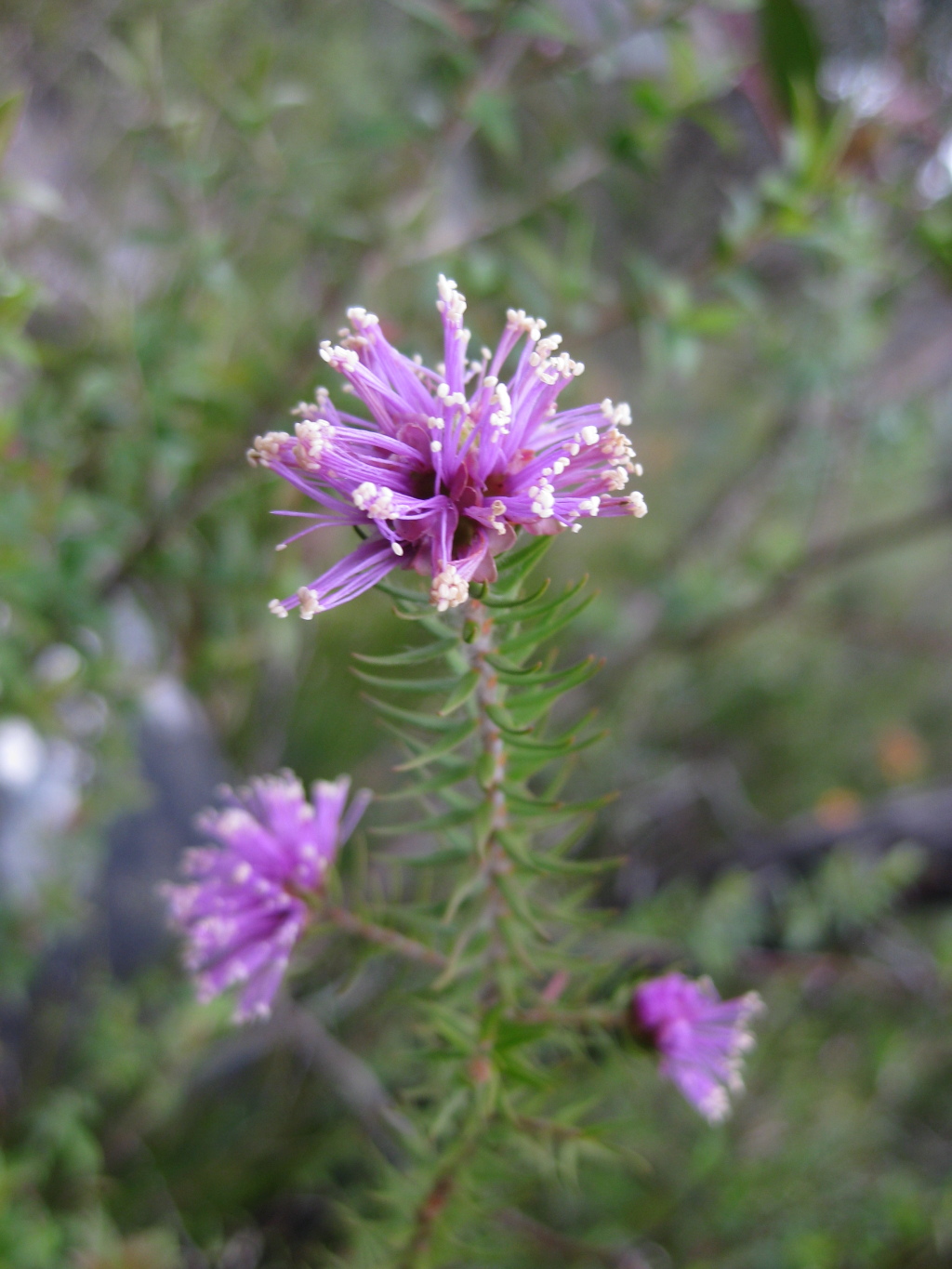Melaleuca squamea
Labill. Swamp Honey-myrtleMostly slow shrub to 3 m high, glabrous except for the young shoots and inflorescence axis; bark corky. Leaves alternate, narrowly lanceolate, 5–12 mm long, 1–3 mm wide, veins 3(–5), tip acute, often turned upwards; petiole to 1.5 mm long. Inflorescence a terminal globular head, 1–1.5 cm wide, generally wider than long; axis hairy, growing on into leafy shoot. Flowers each subtended by an ovate, pointed, papery bract; stamens 4–9 per bundle, pink to purple with yellow anthers, claw to 1 mm long, free part of filaments c. 3–5 mm long. Capsules globose, 5–7 mm diam., sepals not persistent. Flowers spring–summer.
Wim, GleP, VVP, MuF, GipP, OtP, WaP, GGr, DunT, OtR. Also SA, NSW, Tas. Occurs in poorly drained sandy and/or peaty soils in wet heathland areas in the south-west (e.g. near Carlisle River, Portland-Nelson areas), but also locally common on rock-ledges receiving seepage in the Grampians.
Spencer, R.D. (1996). Melaleuca. In: Walsh, N.G.; Entwisle, T.J., Flora of Victoria Vol. 3, Dicotyledons Winteraceae to Myrtaceae, pp. 1027–1034. Inkata Press, Melbourne.
 Spinning
Spinning

